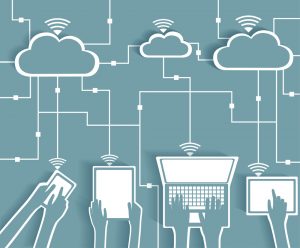It’s hard to imagine human existence without technology. From smartphones to VR headsets to virtual tutoring, there’s so many ways that technology has revolutionized the way we communicate, learn, and do our jobs. How is it that technology has moved so quickly in healthcare, finance, and other big industries, but has taken longer to take shape in the education world? At a fundamental level, the American education system is built according to a model that’s hundreds of years old. There’s a dire need for education to change, and for pioneering innovations to break ground. However, trying to integrate new technology trends in schools that lean significantly into decades-old practices can be difficult.
From the top to bottom with the K-12 public school system, most educators struggle with these top seven barriers to introducing positive technological change.
Having a lack (or no) vision. More schools are starting to embrace innovation, however, not enough of them have a strong plan from the get go. In times when education budgets are getting slashed, educators look to technology because of its potential to save money for their district. However, any tech initiative is bound to fail, without a clear vision that can adequately drive meaningful change and guide teachers in using new digital tools and apps to solve key problems at the classroom level.
Changing what a teacher’s role should be. The debate continues in education, whether we should be moving toward a project- or inquiry-based instruction or sticking to the direct-instruction approach. By sticking with tradition, there is no need for teachers to change. Effective models that have been sweeping across the country, such as the “flipped classroom,” demand that schools rethink what the teacher’s role should be. They put the student at the center of learning, requiring teachers to change in a very drastic and difficult way and become active learners themselves – not an easy ask.
Considering the achievement gap. Teachers recognize that equal access to high-speed Internet at home is a problem for students. Researchers have found that there are significant results from integrating technology into learning, when comparing students from different socioeconomic backgrounds. Some evidence suggests that schools in poor neighborhoods are more apt to use computers for drill-and-practice sessions, but not for creative or deeper learning activities. Poor children also tend to bring less knowledge to using new tools and mobile devices, which children from affluent communities may already own and use every day.
Figuring out how to scale promising innovations. There is a huge barrier to good teachers being able to share and replicate innovative ideas in the classroom. Success in teaching has frequently been tied to standardized test results over the years. And even when teachers succeed, they are not rewarded or encouraged to bring creativity and improvements to the learning environment. When a class or school stumbles on a breakthrough, there is the added challenge of how it’s possible to scale those innovations across a larger system.
Lacking the money to invest in technology. It takes time to create change. With implementing a costly technology solution, keep in mind that it could take years before the numbers change, including classroom resource savings or increased assessment scores. Technology must, though, be considered a high priority. Are there other priorities in the budget that are placed above technology? This is a type of culture that works against innovation in the K-12 environment.
Thinking beyond textbooks. Curriculum can be a huge barrier. Often, teachers become responsible for curating or generating textbooks and supplemental materials for the classroom. With the rising costs of the textbook industry, education leaders are exploring new digitally-based curriculum materials including e-books and learning management systems. Where does the responsibility lie for generating content, as schools start to move past traditional lecture and textbook methods? Free open education resources are one source for content where educators are turning.
Having a strong infrastructure in place (tech and human). K-12’s infrastructure needs to be reexamined before you start adding devices, computers, and other tech tools. Providing robust wi-fi is essential for easy access, particularly with implementing BYOD or one-to-one learning with tablets. It’s equally important to ensure that teachers and staff have enough professional development, training, and support to hone the necessary tech skills.
